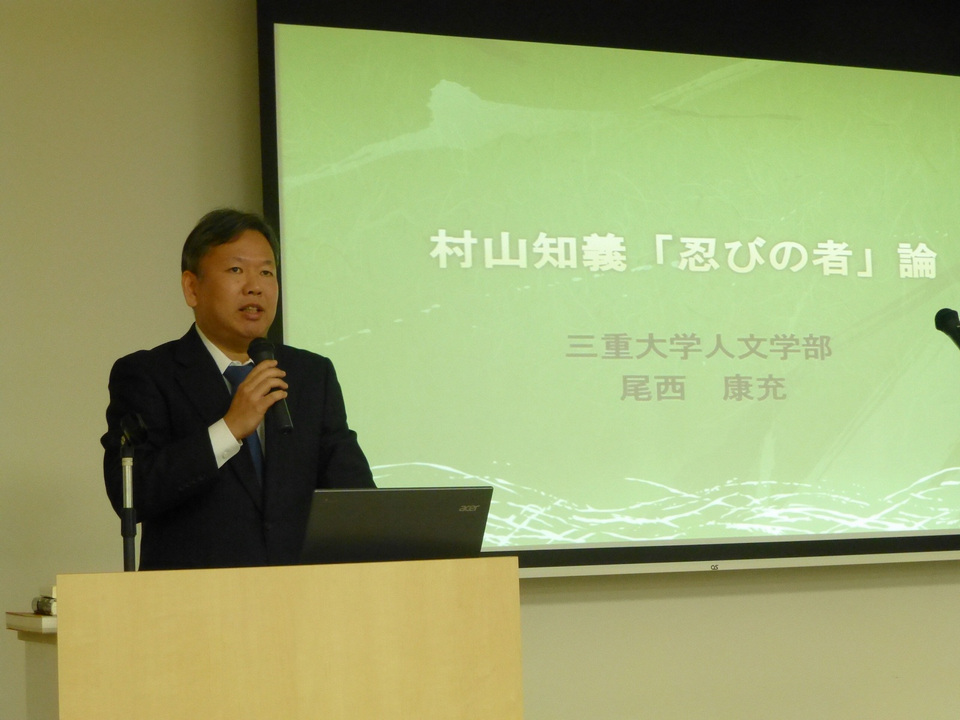Lecture No.4: "Shinobi-no-Mono" written by Tomoyoshi Murayama
"Shinobi-no-Mono" written by Tomoyoshi Murayama (summary)
Lecturer: Yasumitsu Onishi
"Shinobi-no-mono" by Tomoyoshi Murayama, as a trigger of a Ninja boom in postwar Japan, was serialized in the "Akahata Sunday edition" from September 1960 until May 1962. He produced this story as a drama at first, but because of its popularity, it was published by Riron-sha as a book (vol.1) in October 1962, 5 months after it was serialized.
Ninpou and Ninjutsu could be interpreted as supernatural by the reader, therefore Murayama tried to explain in his novel that Ninjutsu was not magic, but that there was certain logic from a scientific viewpoint.
As in his own words, "how many spells they could cast and how many times they could gesture with their fingers, they couldn't vanish magically, Ninja themselves were masters in this point. And they should be more realistic than a monk because they didn't want to risk their lives for anything like a quick-acting magical spell."
Murayama's knowledge about Ninpou and Ninjutsu as well as his scientific analysis were based on the studies about of Ninja by Heishichiro Okuse (in Iga-Ueno). Murayama said that his novel could never exist without his instruction and that this background could help the narrative part of his novel a more reliable one.
Murayama described Ninja in his "Shinobi-no-mono", not only the Genin (low-ranked Ninja) who served their masters and fulfilled their missions truly, but also the one who tried to betray other members of Ninja just because of vengeance, envy and another feelings.
The reason why Murayama brought the essence of "betray" into his novel was that he had a bitter experience with abandoning communism.
In the prewar period, the Japanese Communist Party was illegal and there were many agents from the special secret service police section involved in espionage. But on the other hands they played some major role in maintaining the party. Such kinds of ironical background made Murayama to choose a theory for writing this novel that Fujibayashi Nagato-no-kami and Momochi Tanba could be considered a same person.
